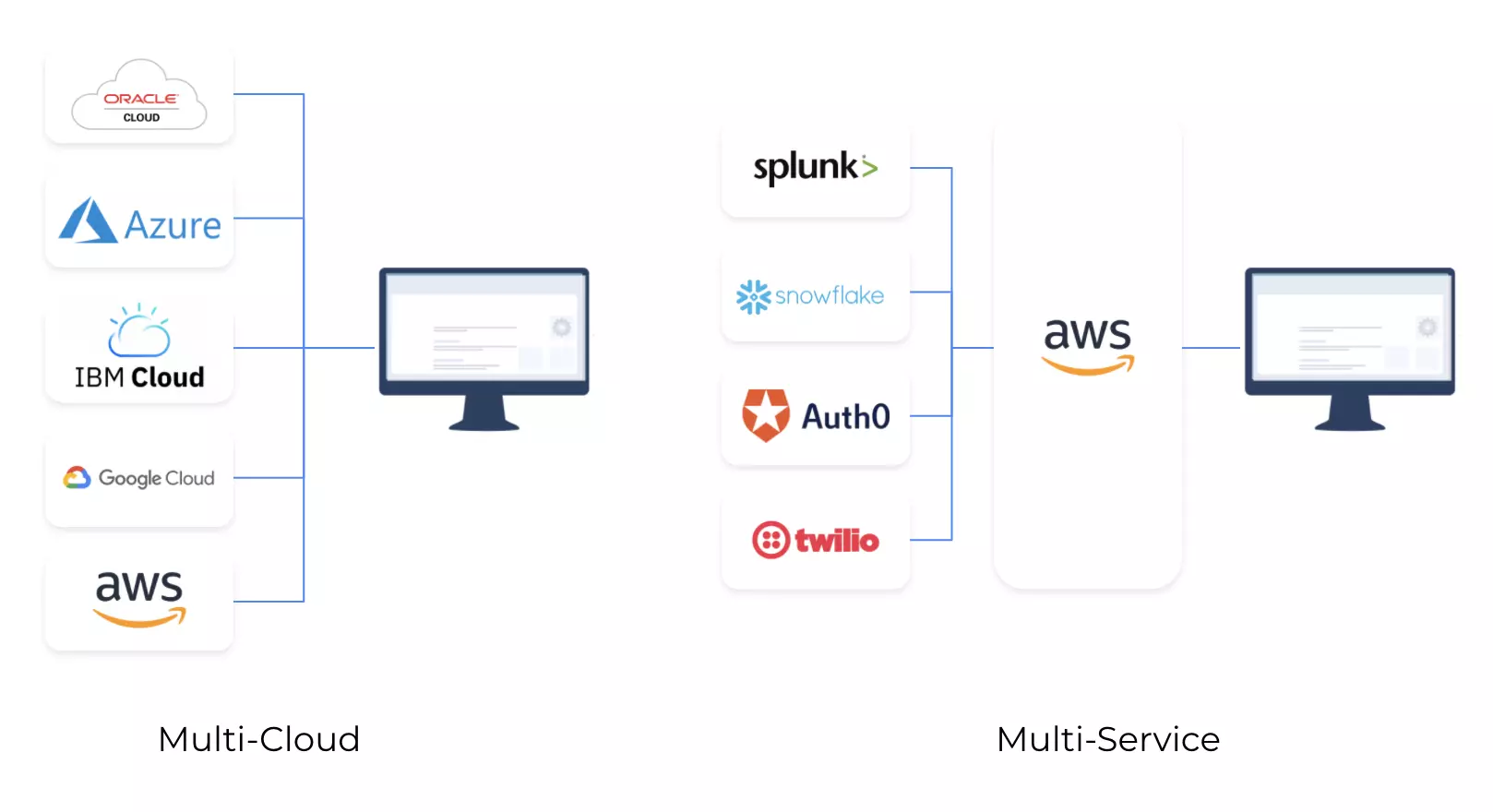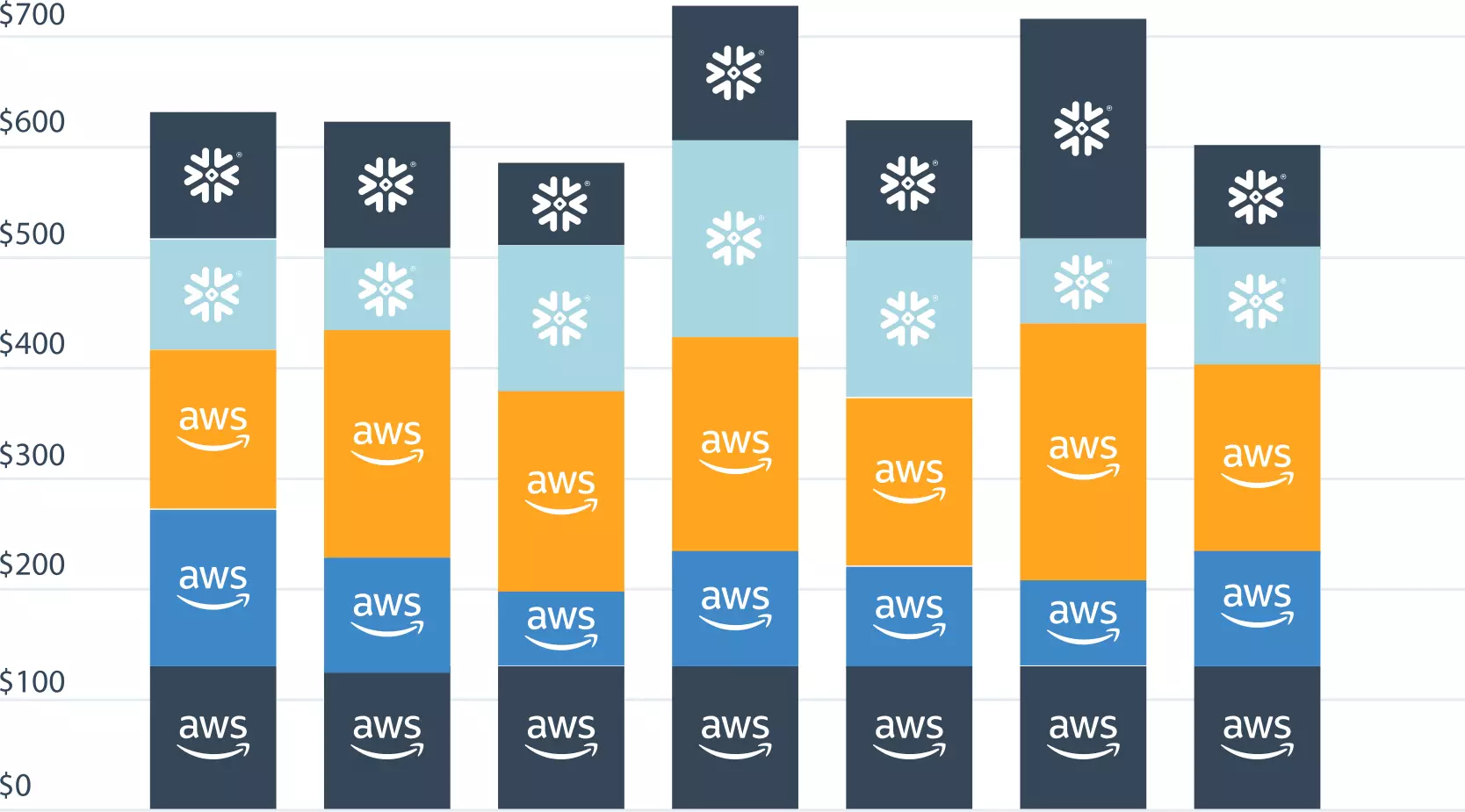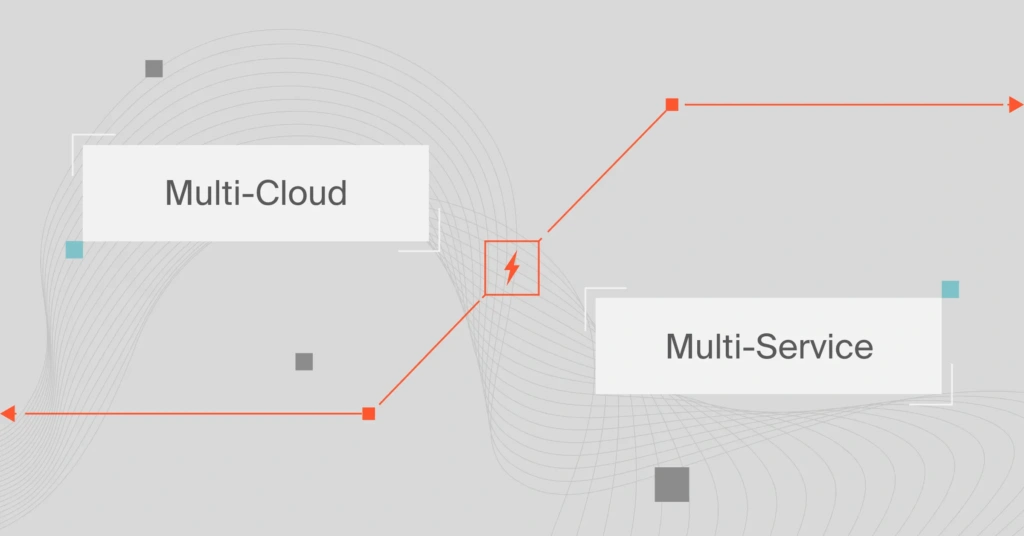Multi-cloud has become a hot-button topic these days, with a lot of cloud experts taking a strong stance against the practice. There are exceptions and legitimate reasons why you might choose a multi-cloud strategy (e.g., you sell to customers who restrict you from hosting their data in AWS). Extenuating circumstances aside, there are far more reasons why multi-cloud isn’t a good idea.
Instead, software-driven companies should consider a multi-service approach — meaning you lock in with a single cloud provider, then build your applications using best-of-breed services.
At CloudZero, this is how we build our products and it has served us well. In this post, I’d like to share my perspective on why multi-cloud hampers innovation, while multi-service fuels it.
A Multi-Cloud Strategy Is Expensive and Impractical
The original and still pervasive thinking on multi-cloud is that it lowers the risk of vendor lock-in. Companies would start contracts with two or more cloud providers to reduce their risk and keep providers on their toes. If they ever wanted to move cloud providers, they’d just shift their app from one cloud to another.
While that may have made sense back when cloud providers like AWS only offered compute and storage, today they offer hundreds of services — and if you’re an innovative company trying to move fast, it would be insane not to utilize them.
By choosing a multi-cloud strategy, you are putting your engineering team at a disadvantage because you are locking yourself into services that fit the lowest common denominator (i.e., services that would be transferable across cloud providers were you to make the switch).
The services from AWS, or any of the major cloud providers, exist to help you move fast and build innovative products — and choosing not to use them will slow you down and leaves your team at a disadvantage.
Without the ability to choose best-of-breed PaaS services from either your cloud provider or anyone else you have doomed your organization to a future of managing and owning the undifferentiated heavy lifting that provides no value add to your customers.
The other problem companies who choose a multi-cloud strategy face is unexpected data transfer costs, one of the most difficult to predict and understand cloud costs. Building in two different cloud providers, or worse, building an application that spans two cloud providers is more often than not — uneconomical.
The promise of the cloud is speed, agility, and cost-efficiency — and a multi-cloud approach puts you at risk of not realizing that promise.
A Multi-Service Approach Drives Innovation
You might be surprised to learn that your company has probably already adopted a multi-service cloud strategy from day one. For example, many companies choose monitoring solutions like DataDog or Splunk instead of AWS CloudWatch Metrics or Logs. Embracing a multi-service approach allows you to leverage best-of-breed vendors like Snowflake for data warehousing or Twilio for messaging. These are just a few examples of how multi-service can drive innovation and improve velocity.
Caution! The service providers you chose should also run “locally” on your cloud provider and within the same region where it makes sense to avoid unexpected network data transfer costs.
The bottom line is that you should think of your cloud provider as an operating system. You should pick one that has the best developer experience and richest application ecosystem — with a history of innovation that exceeds your own. Their innovation will become your unfair advantage in the market, but only if you embrace it fully and commit.
Measuring the Efficacy and Cost of a Multi-Service Approach With CloudZero
As companies choose a multi-service approach, one of the top challenges becomes marrying together data from your cloud provider with all of the additional services you are using as well. Without this, you can’t get a clear picture of what it costs to deliver your products to market. Ultimately, you won’t be in control of your margins.

CloudZero helps to offer complete multi-service visibility by providing a single view of cloud cost data combined with Snowflake. Learn more here.








